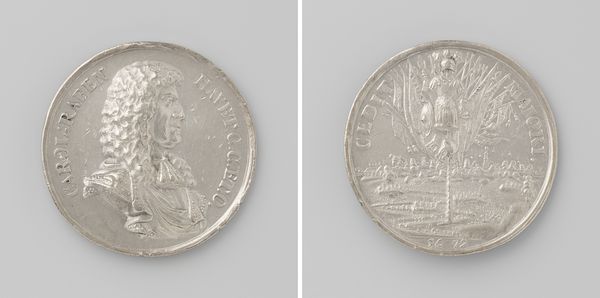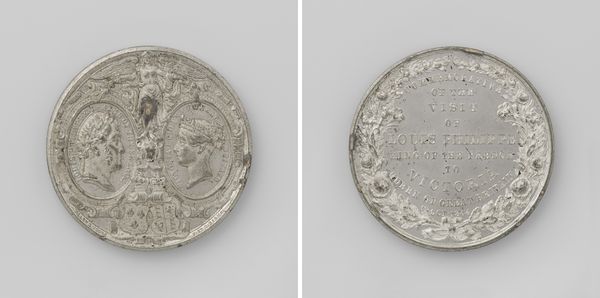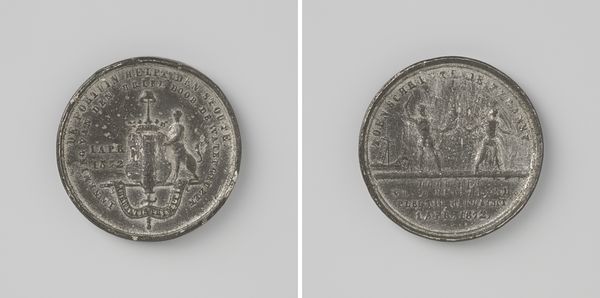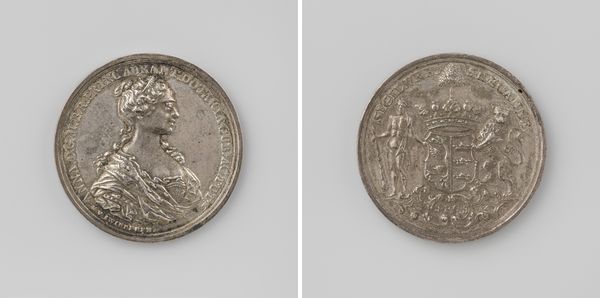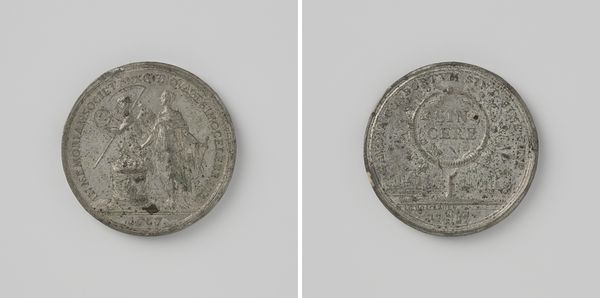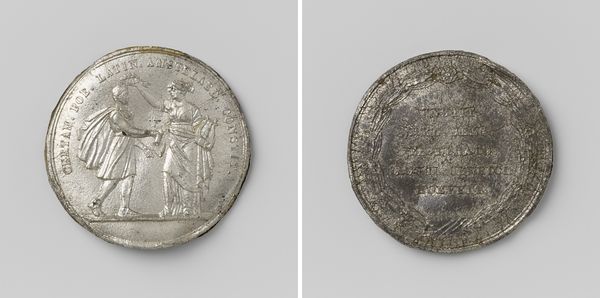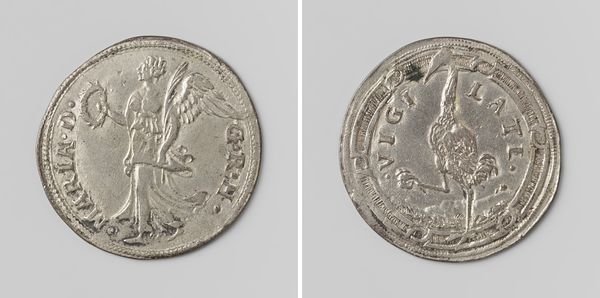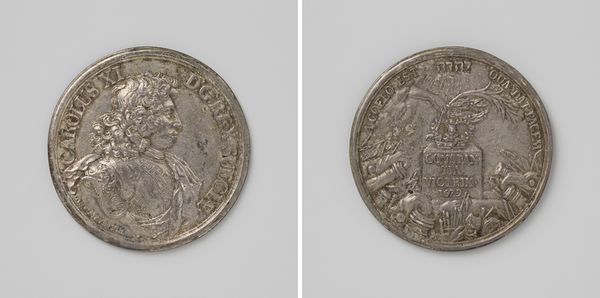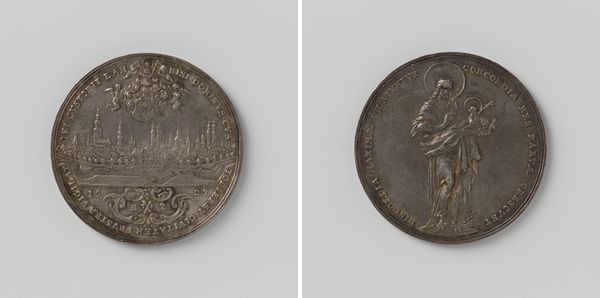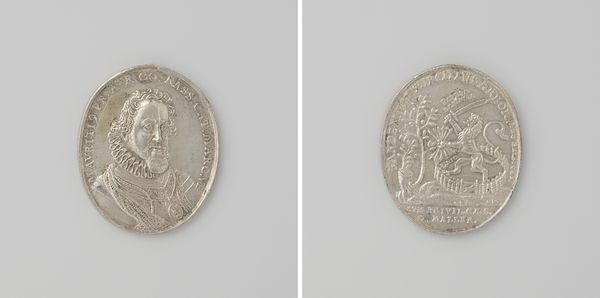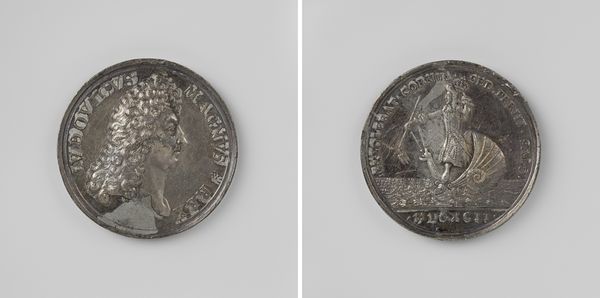
carving, metal, relief, sculpture
#
portrait
#
carving
#
baroque
#
metal
#
relief
#
momento-mori
#
sculpture
#
history-painting
Dimensions: diameter 5.2 cm, weight 41.89 gr
Copyright: Rijks Museum: Open Domain
Editor: This metal relief is titled "Moord op de gebroeders de Witt," or "The Murder of the De Witt Brothers," and dates to 1672. It’s currently held in the Rijksmuseum. It seems to be divided into two scenes… what story do you think it’s telling? Curator: This piece functions as propaganda. The De Witt brothers, powerful politicians in the Dutch Republic, were brutally murdered by a mob during a period of political turmoil. Medals like these were created to shape public opinion. Notice the “memento mori” imagery—the skulls? Editor: Yes, I see them! Below the scene depicting the brothers' corpses. That’s incredibly graphic. Was it common to create commemorative works showing such violence? Curator: It reflects the tumultuous politics and deepening social divisions of the era. This medal would have served to demonize the perpetrators of the violence. It reinforces the horror of the event. Editor: The other side depicts the brothers in profile. Is that meant to serve as a contrast? Before and after? Curator: Precisely. One side showing the brothers in life, leaders of the Republic; the other, the brutal consequences of political upheaval. Consider the inscription as well – a further clue to understanding the work's intention. Can you read it? What do you think the intention behind that choice was? Editor: I see the words “Belgii Defensoribus." It means “Defenders of Belgium”, and it further promotes the idea that these were noble men being honored here. Thanks for putting it into context, especially regarding how its symbolism might reflect power dynamics. Curator: Precisely, the “Defenders of Belgium” language makes the De Witt brothers out to be martyrs, so even the imagery has multiple purposes within political discourse.
Comments
No comments
Be the first to comment and join the conversation on the ultimate creative platform.
